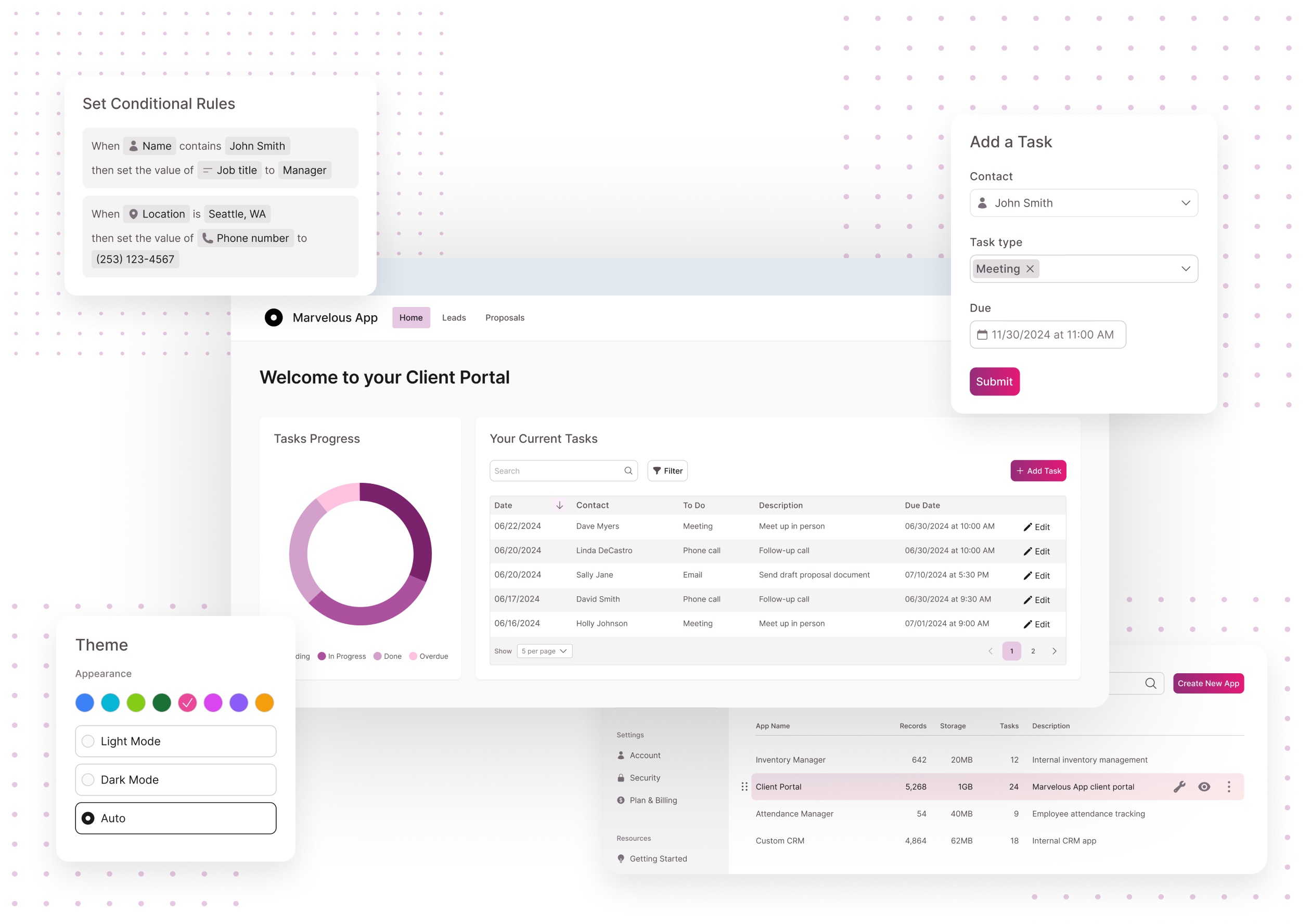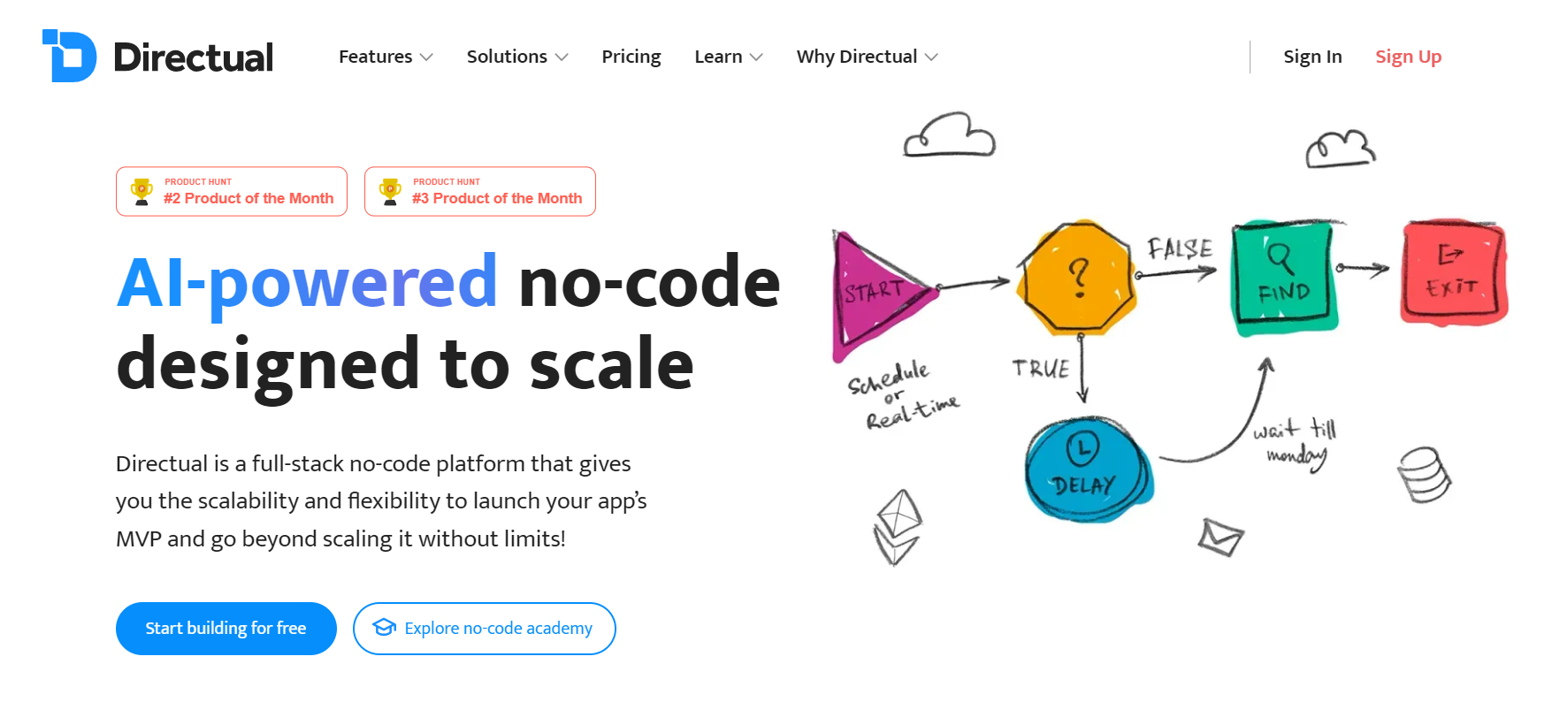Simplify Open Platform Data Source Development with No-Code Development Operatings Systems
Simplify Open Platform Data Source Development with No-Code Development Operatings Systems
Blog Article
A Comprehensive Guide to Implementing Scalable Data Sources Without the Demand for Coding Know-how
In the modern landscape of data administration, the ability to carry out scalable databases without coding proficiency is becoming significantly important for organizations of all dimensions. This guide intends to light up the process, focusing on straightforward devices and user-friendly interfaces that debunk data source setup. By checking out essential functions, effective techniques for application, and ideal techniques for ongoing monitoring, we will address just how also non-technical individuals can confidently browse this complicated surface. What are the critical components that can truly equip these individuals to utilize scalable data sources effectively? The solutions might redefine your approach to information management.
Comprehending Scalable Data Sources
In the realm of contemporary data management, scalable databases have arised as an important option for companies looking for to manage boosting quantities of details effectively. These databases are designed to fit growth by permitting the smooth enhancement of resources, whether with horizontal scaling (including extra makers) or vertical scaling (updating existing makers) This versatility is crucial in today's fast-paced digital landscape, where information is created at an unprecedented rate.
Scalable databases usually use distributed styles, which enable data to be spread throughout multiple nodes. This circulation not just boosts efficiency however also gives redundancy, ensuring information schedule even in the event of equipment failings. Scalability can be an important aspect for various applications, consisting of e-commerce systems, social networks networks, and big data analytics, where individual need can fluctuate significantly.
Additionally, scalable data sources commonly feature durable information consistency designs that balance efficiency and reliability. Organizations has to consider their certain demands, such as read and write speeds, information honesty, and fault tolerance when choosing a scalable data source solution. Ultimately, recognizing the underlying principles of scalable data sources is important for businesses intending to grow in a progressively data-driven world.
Secret Features to Try To Find
When reviewing scalable data sources, a number of crucial functions are critical to making certain optimal efficiency and reliability. Consider the design of the data source. A distributed architecture can boost scalability by allowing data to be stored throughout several nodes, assisting in smooth information access and processing as demand rises.
Another essential attribute is data partitioning, which allows efficient administration of huge datasets by splitting them right into smaller sized, much more manageable pieces (no-code). This approach not just improves efficiency but additionally simplifies source appropriation
Additionally, search for durable duplication capabilities. This attribute guarantees information redundancy and high accessibility, decreasing downtime throughout upkeep or unexpected failures.
Efficiency surveillance tools are additionally crucial, as they provide real-time understandings into system health and wellness and functional efficiency, permitting prompt modifications to keep optimal performance.

User-Friendly Data Source Equipment
Simplicity is a vital aspect in the layout of easy to use database tools, as it enhances ease of access for customers with varying degrees of technological competence. no-code. These tools focus on user-friendly user interfaces, allowing individuals to produce, take care of, and question databases without calling for extensive shows understanding
Secret attributes usually consist of drag-and-drop capability, visual information modeling, and pre-built design templates that streamline the configuration process. Such tools typically supply led tutorials or onboarding procedures that facilitate user engagement and lower the discovering curve. Furthermore, seamless integration with prominent information resources and solutions guarantees that users can conveniently import and export information, additionally simplifying operations.

Moreover, durable assistance and area resources, such as discussion forums and paperwork, boost the user experience by giving help when needed. Overall, straightforward data source devices empower companies to harness the power of scalable databases, making data administration available to everyone included.
Step-by-Step Implementation Overview
How can organizations properly apply scalable data sources to fulfill their expanding data needs? The process begins with identifying particular information needs, consisting of the quantity, selection, and speed of information that he has a good point will certainly be refined. Next, companies should evaluate user-friendly data source devices that supply scalability attributes, such as cloud-based services or took care of database services.
When the appropriate tool is selected, the following step entails setting up the database atmosphere. This includes establishing instances, defining customer approvals, and establishing information structures that line up with organization goals. Organizations should then migrate existing information right into the brand-new system, making certain data honesty go to my site and very little disruption to operations.
Post-migration, performing extensive screening is essential; this includes efficiency testing under various tons problems to make sure the system can take care of future growth - no-code. Furthermore, it is necessary to train team on the database administration user interface to promote smooth use
Ideal Practices for Monitoring
Effective management of scalable databases needs a calculated method that focuses on ongoing tracking and optimization. To attain this, organizations should apply robust surveillance devices that provide real-time understandings right into database efficiency metrics, such as inquiry reaction times, source application, and deal throughput. Routinely evaluating these metrics can aid determine bottlenecks and locations for improvement.

Routine backups and disaster healing plans are necessary to secure information integrity and schedule. Establishing a regular for evaluating these back-ups will ensure a reputable recuperation process in situation of an unforeseen failing.
Additionally, performance tuning need to be a constant procedure. Readjusting indexing approaches, optimizing questions, and scaling resourcesâEUR" whether vertically or horizontallyâEUR" will certainly help preserve ideal efficiency as usage demands evolve.
Finally, promoting a culture of knowledge sharing amongst team members will enable constant learning and adaptation, guaranteeing that the monitoring of scalable databases continues to be effective and efficient with time.
Conclusion
Finally, the application of scalable databases can be successfully achieved without coding expertise with the application of user-friendly user interfaces and straightforward tools. By sticking to the laid out strategies for arrangement, information movement, and efficiency screening, individuals can navigate the complexities of database monitoring with convenience. Emphasizing ideal techniques for continuous maintenance and partnership further improves the capability to take care of scalable databases successfully in a rapidly advancing data-driven setting.
In the modern Related Site landscape of information administration, the capability to apply scalable databases without coding knowledge is ending up being progressively important for companies of all sizes.In the realm of contemporary data management, scalable databases have emerged as a crucial option for companies seeking to manage raising quantities of info efficiently.Additionally, scalable databases often include robust information uniformity designs that balance efficiency and integrity.Just how can organizations effectively apply scalable databases to fulfill their growing data demands? Next off, organizations need to review user-friendly data source devices that supply scalability functions, such as cloud-based services or took care of database services.
Report this page